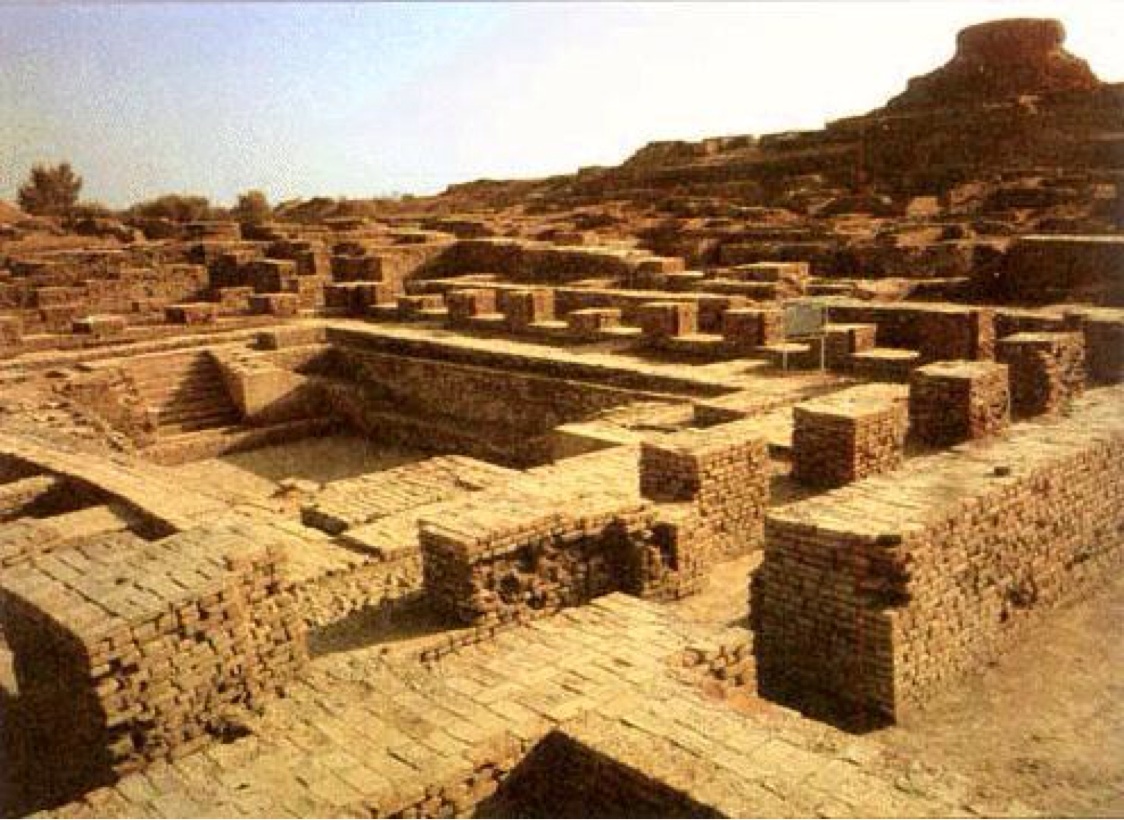 |
| Called 'The Priest King' this iconic Harappan statue was found in Mohenjo Daro |
Harappa was rediscovered (by a white person) in 1826 CE by British Army deserter, James Lewis. Lewis was wandering the Punjab region of the then British India in search of ancient artifacts, and, presumably, in avoidance or people who would take him back to the army. At the time Lewis, and the archaeologists who later followed him, assumed that the city dated to around the era of Alexander the Great. However, later discoveries of artistic seals identical to ones found in Sumer would prove that the Harappa civilization is much, much older.
Beginning somewhere around 2500 BCE, and ending about a millennium later, the mysterious Harappa Civilization left little behind except their enigmatic cities. Because the Harappan script has yet to be deciphered, information on the Harappans has to be gleaned from the remains of their cities.
 |
| Ruins at Harappa |
Harappan cities are laid out on a grid system, with streets aligning with the cardinal directions (north, east, south, west.) These streets were paved, and there were separate residential and commercial streets. In addition to planned streets, there was also a general sewer system, which was connected with every home. In general, most houses had latrines and a bathing facility. Additionally, houses were located nearly public wells and fountains so that citizens had access to fresh water.
An interesting feature of Harappan cities is the uniformity of their building materials. Buildings were made of mud bricks covered in plaster. Brick size seems to have been standardized across the Harappan civilization, as bricks in Mohenjo Daro are the same size as the bricks in Harappa, and all bricks in the city are the same size. Additionally, the durability of these bricks have led to them being constantly reused in new building projects. At the time of Harappa's rediscovery most of the bricks had been stripped away from the city to build the Lahore Railroad. It is a testement to the Harappans' skill that over 100 miles (161 kilometers) of railroad was paved using those bricks.
 |
| The 'Great Bath' in Mohenjo Daro. Though little is known about Harappan religion, it is speculated that bathing was an important religious ritual. |
The disappearance of the Harappa Civilization as traditionally been attributed to an invasion from Aryan peoples. (No, not those aryans). For many years it was believed that the Aryans had wiped out the Harappa Civilization when they conquered India. However, recent discoveries have called this theory into question. The lack of evidence of mass slaughter, and the genetic continuity between remains from Harappans and the modern people of Punjab and Sindh suggest that the Aryans may have arrived after the Harrapans had left. It is now hypothesized that shifting climate and overcrowding caused the Harrapans to leave their cities, and disperse to other settlements in the region, abandoning Harappa and Mohenjo Daro. This theory is hardly satisfactory, and undoubtedly continuing research will see this theory modified within the next decade.
Indus Valley Civilization
Indus River Valley Civilizations
Indus Civilization
Early Civilization in the Indus Valley
The Ancient Indus Civilization
Harappa: An Overview of Harappan Architecture and Town Planning
Harappa
The Harappan Civilization
The Lost City of Mohenjo Daro
Mohenjo Daro
Mohenjo Daro and Harappa
